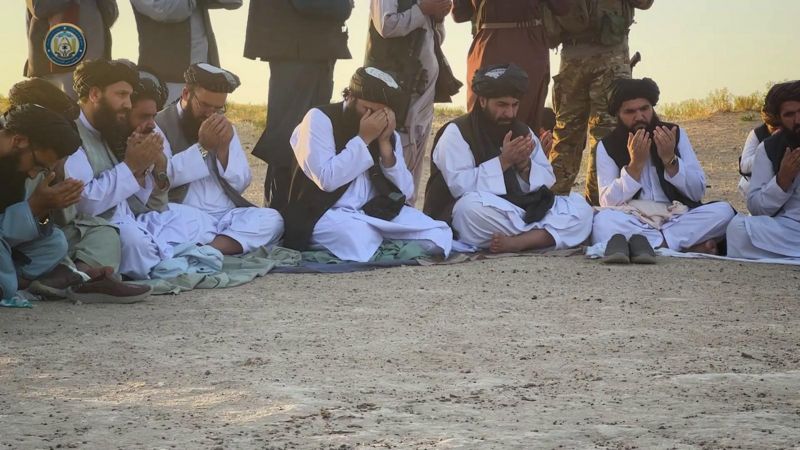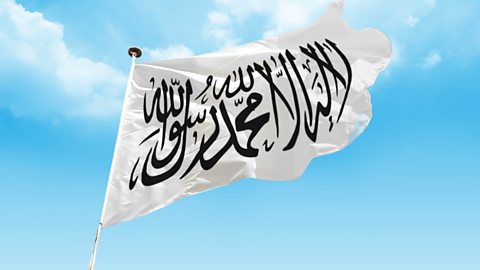Sirajuddin Haqqani’s trip to northern Afghanistan and “Dasht Laili” made news

The trip of Sirajuddin Haqqani, the Minister of Interior/Taliban country and the leader of “Haqqani Network” to the northern provinces of Balkh and Jawzjan and his visit to the “Dasht Laili” area, where it is said that the dead Taliban were buried in the 1990s, made news. .
Mr. Haqqani went to the shrine attributed to Hazrat Ali and the tomb of Wazir Mohammad Akbar Khan in Mazar-e-Sharif and met with Mohammad Yusuf Wafa, the governor of the Taliban, who is the former governor of Kandahar and one of the people close to the leader of the Taliban, and after the assassination of the governor of Balkh by an ISIS suicide bomber, he went to Balkh. Sent.
Mr. Wafa described the presence of the Minister of Interior in Balkh as “a good step”.
In a meeting with scholars and local influentials in Mazar-e-Sharif, the Taliban’s interior minister emphasized the “survival of the system” of the Taliban and said that anyone who disobeys the amnesty order of the Taliban leadership will be punished according to Sharia law.
In his speech, he repeatedly praised Hebatullah Akhundzadeh, the leader of the Taliban in Kandahar. This is while the UN Security Council has revealed the differences between Mr. Haqqani and the Taliban leader in a new report.
Local media reported that Mr. Haqqani has turned the house belonging to Marshal Abdul Rashid Dostum, the former vice president of Afghanistan in Jawzjan into a Taliban jihadist school.
The Taliban’s Ministry of Interior announced the news of Mr. Haqqani’s trip after he returned from a 5-day trip to the north. He also visited Dasht Laili in Jawzjan, where Taliban people were killed in the wars of the late 1990s and 2001.

At the same time as Mr. Haqqani’s trip, two deadly explosions occurred in Faizabad, the center of Badakhshan in the northeast, in the first one, the deputy governor of the Taliban and his driver were killed in Badakhshan, and two days later, an explosion occurred in his funeral ceremony, which killed at least 13 and injured more than 30. Injured, including a number of commanders and members of the Tajik Taliban were killed and wounded.
In a statement, the Islamic Jamiat of Afghanistan called the recent events in Badakhshan “the continuation of the hostility within the Taliban group” in this province.
A number of analysts and users of Afghan social networks have also linked Sirajuddin Haqqani’s trip to the north of Afghanistan with the discussions about the possible transfer of members of the Pakistani Taliban to the north.
Daud Naji, the adviser of the National Security Council of the previous government, wrote on Twitter : “Look at these three issues together: 1- Koch Tepe Canal has reached the stage of land distribution. 2- Taliban and Pakistan agreed to move TTP members to the north. 3- Important members and commanders of the Tajik Taliban are killed. “This process may soon involve Uzbek and Turkmen commanders of the Taliban.”
Last week, Pakistan’s Interior Minister Rana Sanullah said: “About two months ago, the Taliban government told us that they are sending TTP members to areas far from the border, where their access to Pakistan will be reduced.”
Meanwhile, Kandahar-based Taliban spokesman Zabihullah Mujahid did not specifically say anything about the mentioned proposal, but he stressed in a message to the BBC that they are taking the necessary steps to ensure that Afghan soil is not used against another country.
What happened to the Taliban in Dasht Laili?

During the first period of their rule, the Taliban forces were able to capture the north of Afghanistan twice, which faced popular uprisings.
For the first time in the month of Thor/May 1376, they took control of the city of Mazar-e-Sharif for a week, when they were forced to leave the city due to a popular uprising, and the Taliban forces suffered a severe defeat in the city, and hundreds of members of this group were killed during the retreat. And at that time the report “a number of them were also thrown into the wells of Dasht Laili in Jawzjan province”.
According to the reports of international human rights organizations, the Taliban group “killed thousands of civilians” by recapturing the city of Mazar-i-Sharif in 1377.
Human Rights Watch said in a report that the massacre of Mazar-e-Sharif by the Taliban was in “revenge” for the killing of about 2,000 of its forces in Thor/May 1376, which occurred after the attackers were expelled from the cities of Mazar-e-Sharif and Shaberghan.
It is also claimed that in 2001, after the US-led coalition forces invaded Afghanistan, it was said that a number of surrendered Taliban forces were killed by Marshal Dostum’s men and buried en masse in Dasht Laili.
In 2021, the Taliban found mass graves attributed to its people in Laili plain.
A number of captured Taliban forces were also killed in the war fort in Mazar-i-Sharif during the US invasion of Afghanistan after they revolted.
Taliban officials mainly visit the places of these events when they travel to the north of the country.
Taliban has built a monument in this place for their dead.




